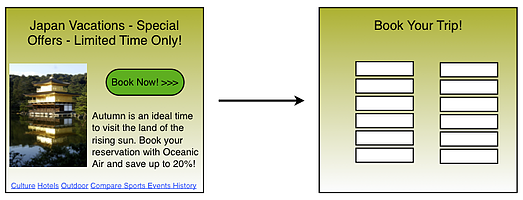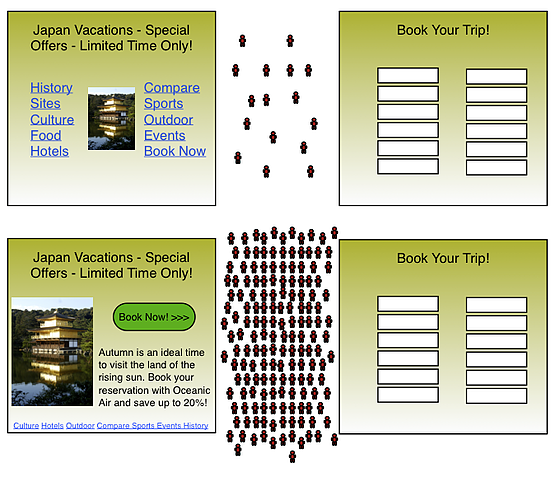If there's one strategy we advocate above all else when it comes to turning a good website into a conversion machine, it's test, test, test!
Testing new methods to improve an intended outcome isn't anything new. It was practiced long before the internet came around. As long as intelligent humans have existed (we have those now, right?) we've always been in search of a better way. "We've done this to get that, but what if with did this instead in order to get that?" It's a very powerful method but to implement a true scientific test isn't so simple. Unless, of course, we're talking about the internet :)
In previous posts I (and Neal) have advocated the importance of establishing goals for your site before doing anything else. If we want to achieve success, we need to first define success - a phone call, contact form submission, purchase. We also need to define our micro level goals that support the success of the high level goals. If we want people to submit a contact form, what does it take for someone to get to the Contact Us page (where the form resides). If our goal is for someone to make an online purchase, what are the stages of the shopping cart funnel and where are the weaknesses? Where does the process bottleneck and where does it flow freely? Once we've determined this, we've done ourselves a HUGE favor. We know how to track success, how to define it, and most importantly, what we can test to make it happen more!
Here's an example from our client Oceanic Air (not their real name) that books flights online (not their real business).
The goal of the site is to get people to book a flight. That is the macro goal. But in order for us to move that (much larger) needle, we had to identify the bottlenecks along the way. Booking a flight is, after all, a multiple step/multiple page process. We selected the landing page of our PPC campaign as the first page to test. While there was a wealth of information available on this page, the link to the Book Your Trip page (i.e. the one action we want the visitor to take), was camouflaged among all the other links on the page.
Our hypothesis was simple: develop a new landing page with an increased emphasis on the desired action and more people will begin the process of booking their flight. Here's what we came up with:
We could easily just upload the new changes to the site and monitor the number of visits to the "Book Your Trip" page and see how the new page does, but like most businesses, there's a seasonality factor. Any changes we experience in flight bookings could be as much a factor of outside forces as it is a change in the page design. So how can we test both pages fairly against each other? Our answer is Google's Website Optimizer.
The concept is simple: select a page, identify the goal of that page, and finally, upload different variations to test against each other. After configuring the test and adding the proper code to the test pages, Google will display a predetermined percentage of traffic to different page variations. It measures the success rate for each page, then after it has accumulated a large enough sample size, declares an experiment winner. In our Website Optimizer experiment with Oceanic Air (again, not their real name), here's what we saw:
Both pages received nearly 800 visitors over the course of the test. Of all the visitors to the original page, less than 2% clicked the link to book a flight. On the new landing page, visitors began booking a flight at a rate of 21%! We went from getting 1 in 50 visitors to take the desired action to 1 in 5 visitors!
[It's important to note here we did not increase booked flight conversion rate from 2% to 21%. We've only reduced the bottleneck for a very important step in that process.]
Having said that, this is still a VERY significant result and a shining improvement! We still have much more testing to perform (the booking process doesn't end at the "Book Your Trip" page), but we have seized a very low hanging fruit. We were confident the new design would perform better, but now we have the data to back it up.
Do you know the goal(s) of your site? Do you know what steps need to take to make that goal happen? Most importantly, what would eliminating a bottleneck mean to the success of your site's goals?








Agree, disagree, or just have something to add?
Leave a comment below.